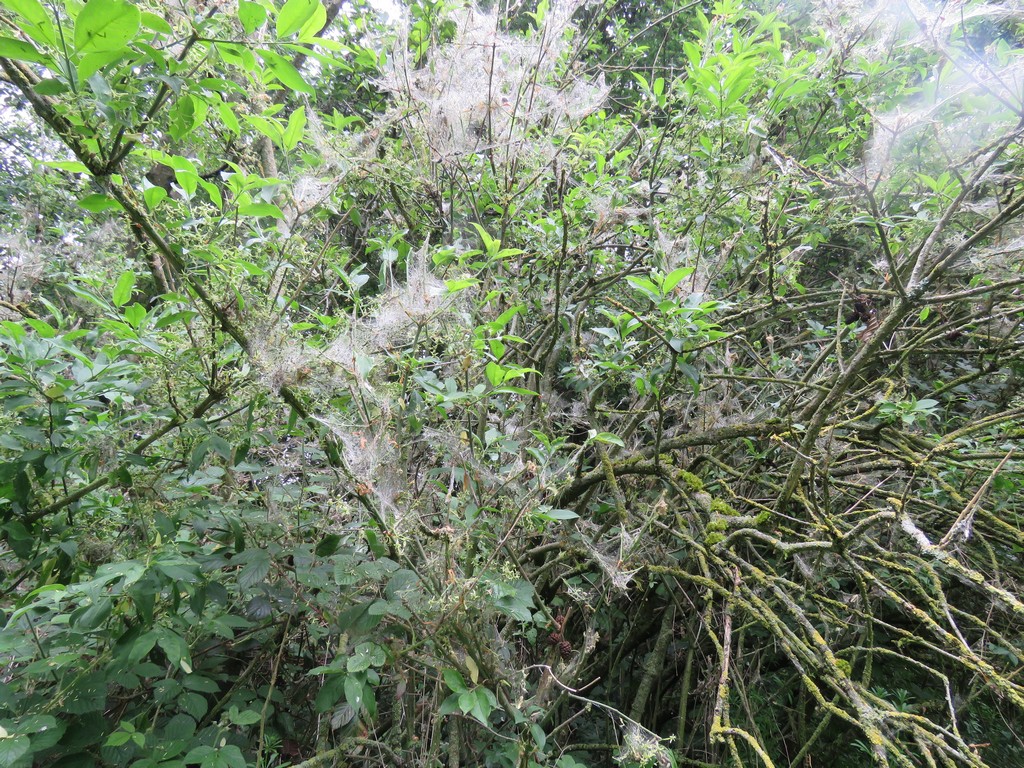Nature Notes: Ermines – Miners & Spinners
Last month we met the Hawthorn Fly. For June, Hawthorn features again; in a different capacity. Recently you may have noticed trees and hedges, including Hawthorns, covered in an apparent blanket of spider’s web. This is the work of a group of micro moths in the family Yponomeutidae, known collectively as the ermines.

Adult moths in this group rarely reach 12mm in length. They are white with small black dots and can appear at light traps in large numbers. Although there are several species, identification of individual moths, even under the microscope, is not possible.
Several species that occur locally share their name with the host tree. These are Willow Ermine, Spindle Ermine, Apple Ermine (on crab apples) and Bird Cherry Ermine (on wild cherry). Hawthorn bushes and trees are visited by Orchard Ermine Moth and by the Hawthorn Moth.
Hawthorn Moth is not a white ermine moth but it is a closely related species. This moth is grey with two blackish bands and black dots. It is similar in structure to the ermines.
From eggs laid on the host tree, larvae emerge that are tiny enough to live inside the leaf where they ‘mine’ the nutrients necessary for growth. When they become too large to feed in this way they emerge onto the surface of the leaf where they spin a silk like thread to deter predators and where they begin eating the whole leaf. Collectively the larvae form the silken web that we see and defoliate large section of the host tree. When sufficiently large they come down a rope-like silken thread into the vegetation below the tree where they pupate and eventually emerge as adult moths.

Most affected trees rapidly grow new leaves and by mid-summer there is little evidence of the former webs. It is possible however, that repeated defoliations affect the life span of the host tree. Moth enthusiasts who wish to photograph the various adult species collect larvae and leaves in segregated containers and grow them on until the adults eventually emerge.
This month’s photos are of a significantly defoliated Spindle tree and a bunch of Spindle Ermine Moth larvae that are about to begin their descent to the ground.
David Scott




 Kibworth Bowling Club – June 2025
Kibworth Bowling Club – June 2025

